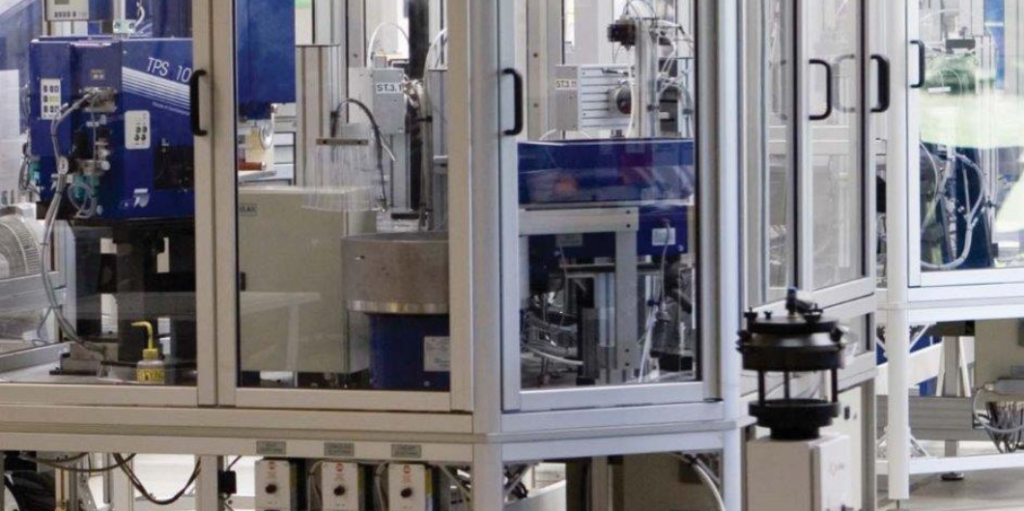Machine Guard & Cover Materials
A machine guard protects operators from dangerous moving parts, projectiles, sparks, and other hazards. It’s a crucial investment for any industrial organization because it’s an operator’s last line of protection against accidents. Optimizing machine guard safety is a critical concern for plant owners, safety managers, industrial designers, and engineers.
Creating machine guarding that can survive industrial use is difficult. Design and performance criteria vary widely per industry. A carmaker has distinct needs than a food processor or tool and die company.
This is where plastics come in.
The diverse range of polymer materials, which serves a variety of functions in machinery and equipment, can increase a machine guard’s lifespan and potentially address numerous application failure issues that designers and operators frequently encounter.
That said, it’s essential to choose and use plastics properly to match the working environment and the specific threats that a piece of equipment poses. Common solutions for these challenges involve plastics such as polycarbonate, acrylic, PETG, and clear PVC.
Needed Features for Machine Guards
There are three key requirements plastic materials for machine guards must meet.
- Durability – Most machine guards must be impact-resistant. Machine guards don’t all contain moving parts, yet they all protect operators from projectiles. OSHA expressly mentions impact resistance when describing guarding material and states materials must be substantial enough to withstand impact and extended usage.
- Stiffness – Due to high heat sensitivity, some plastics can lose stiffness as the temperature increases. Others hold up well even at high heat. When selecting a plastic for machine guards, it’s essential to know how its stiffness will maintain under heat due to environment or friction.
- Optical Clarity and Light Transmittance – These are vital in a machine guard while watching the machine’s interior. While perforation can work for some opaque materials, users usually prefer an unobstructed view. Maintaining a machine guard’s optical clarity can be difficult, especially in high-traffic locations or with sterilized machinery. Still, many users favor materials that allow them to monitor machine operation.
The Four Types of Machine Guards
Guards are barriers that prevent access to danger areas: fixed, interlocked, adjustable, and self-adjusting. Here is how each works.
- Fixed – A fixed guard is a constant device component. Its ability to work is not reliant on moving parts. Plastics or any other robust material can be used for this purpose, and the fixed guard is often favored for its simplicity.
- Interlocked – This guard can trigger control operations based on tripping mechanisms and other moving parts. The machine won’t run until the guard is restored to its safe, operational position. An interlocking guard may be electrical, mechanical, hydraulic, pneumatic, or a combination. Interlocks shouldn’t prevent remote “inching,” but the machine should not be able to restart until all guards have been reset completely.
- Adjustable – Provides a barrier that may be adjusted to facilitate various production operations. These can be constructed and adjusted to fit varying stock sizes and allow for greater flexibility in production. The downside is that they can require frequent adjustment, can be unsafe for the operator, and often don’t provide desirable visibility.
- Self-adjusting – These provide a barrier that moves according to the size of the stock entering the danger area. As stock enters an area, it accommodates for its size, returns to its original formation after the stock has left, and is ready for the next item. Note that these guards may require frequent maintenance.
What Plastics Work Well for Machine Guards?
Machine guards are often made of polycarbonate; PETG, acrylic, and clear PVC are occasionally employed. Due to its optical properties, transparent polycarbonate is most commonly used. These guards are intended to shield workers from potential harm caused by flying debris or damaged equipment and to prevent product contamination while being processed.
Polycarbonate is the perfect material for machine guard applications because of its tight tolerance machinability, transparency, and hardness. It can be made to meet FDA requirements for contact with food, is fire resistant, and naturally self-extinguishing.
PETG guards are also a good choice for machine guards and can get FDA approval, but clear PVC is the material of choice for situations where chemical resistance is crucial. PVC is also resistant to many alcohols, fats, and oils.
PTFE and HDPE can be found in many conveyor systems, but they don’t offer much optical clarity. Still, they, too, can be used in situations where there is contact with harsh chemicals or food safety concerns.
Machine Guard Solutions at Piedmont Plastics
For industrial, manufacturing, and food processing applications, Piedmont Plastics provides a variety of performance plastic materials to meet your needs. Contact one of our materials specialists today for additional information on how we can help with your next project.
